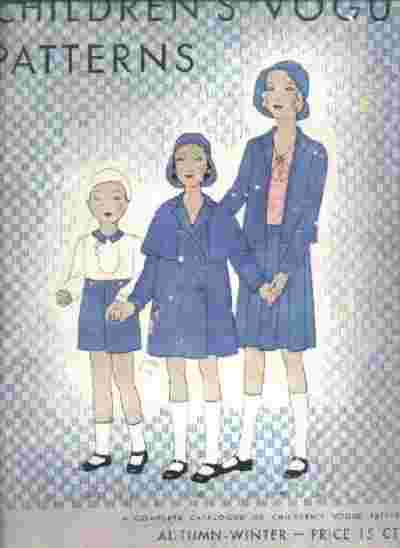
Figure 4.--Vogue published this book of children's clothing patterns in the 1930s Despite the Depression there was still an interest in fashion. |

|
Ladies and fashion magazines have been publishing the information of interest to women for the past two centuries with "sucessful formulas" that keep women reading. Women's magazine from the beginning had covered fashions. They included much more than just fashion, but addressed the full gammet of domestic topics. WWith increased subscriptions by the 1890's, the ladies magazine expanded the capacity for communication from one community of ladies to all communities of ladies throughout America. And, although they created this large audience they still maintained their "small town" attitude of community and caring in their writing. The term for these magazines shifted from ladies to women's magizines. As best I can figure out, modern women don't like to be called ladies. The early trendsetters in publishing have now evolved into the brilliant magazines of today like BUST, Bazaar, and Martha Stuart's Living. The magazines of the 1990s, however, have much less about boys'clothes than the earlier magazines or even the magazines of a generation ago. Apparently the modern woman is less interested in children's clothes. Here we will separate womens and fashion magazines. This is difficult because there is considerable overlap between the two. While HBC is primarily interested in fashion, the womens's magazines are impoyant because they include a lot of fashion material. And the primary readership of both is women. Women's magazines are particularly important to HBC because of all the fashion information and domestic information included. They are a particularly extensive source because they were so financially successful. While HBC is primarily interested in fashion, the womens's magazines are important because they include a lot of fashion material. And the primary readership of both is women.
A a new publication genre appeared in the 19th century--the woman's magazine. Ladies and fashion magazines have been publishing the information of interest to women for the past two centuries with "sucessful formulas" that keep women reading. Women's magazine from the beginning had covered fashions.
With increased subscriptions by the 1890's, the ladies magazine expanded the capacity for communication from one community of ladies to all communities of ladies throughout America. And, although they created this large audience they still maintained their "small town" attitude of community and caring in their writing. The early trendsetters in publishing have now evolved into the brilliant magazines of today like BUST, Bazaar, and Martha Stuart's Living.
These often include articles about fashion as well as child care--issues that often touched upon clothing issues. They included much more than just fashion, but addressed the full gammet of domestic topics.
The magazines of the 1990s have much less about boys'clothes than the earlier magazines or even the magazines of a generation ago. Apparently the modern woman is less interested in children's clothes. Here we will separate womens and fashion magazines. This is difficult because there is considerable overlap between the two.
Women's magazines are particularly important to HBC because of all the fashion information and domestic information included. They are a particularly extensive source because they were so financially successful. They not only included patterns, fashion and home making articles, but also a wide range of advertising. Advertisers were attracted to women's magazines because it was the wife and mother thast was the main factor in buying consumer products, especially domestic products.
The husband may have earned the family income, but the wife did much of the spending. The most important women's magazines in te 20th century were called the Seven Sisters. They included: Better Homes & Gardens, Family Circle, Good Housekeeping, Ladies' Home Journal, McCall's, Redbook, and Woman's' Day. The Seven Sisters were primarily for married women. There were more cutting edge women's magazines for younger women, both women not yet married or married women who were less interested in domestic life. These magazines included: Cosmopolitan, Seventeen, and YM.
Quite a number of household/home maling guides have been published over the years addressing on a range of other issues touching upon fashion and children's clothing, such as hair styles and care, breeching, washing, care of clothing, selecting age appropriate clothing, dressing sibling alike and many other pertinent subjects.
In some cases it is difficult to know how to classify some magazines. Many are comonly intertwined with fashion. We have listed magazines with a more narrow on fashion in the separate fashion ,magazine page.
We have found quite a number of magazines that might be called ladies or women's magazines. The most important and best known, of course, are the Seven Sisters. There are, however, many other magazines over time. Several have been of considerable importance for a time. We will also list the non- periodical publications we have found. Each had their own unique history and destinctive focus.
Navigate the Boys' Historical Clothing Web Site:
[Return tp the Main U.S. fashion and women's magazine page]
[Return to the Main photo, printing, and publishing pages]
[Return tp the Main fashion publishing page]
[Introduction]
[Activities]
[Biographies]
[Chronology]
[Clothing styles]
[Countries]
[Bibliographies]
[Contributions]
[FAQs]
[Glossary]
[Satellite sites]
[Tools]
[Boys' Clothing Home]
Navigate the Boys' Historical Clothing Web Site:
[Sailor suits]
[Sailor hats]
[Buster Brown suits]
[Eton suits]
[Rompers]
[Tunics]
[Smocks]
[Pinafores]
